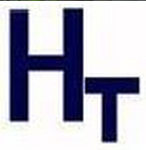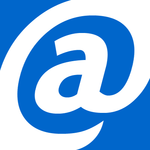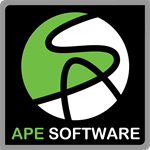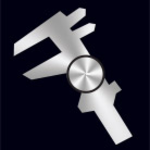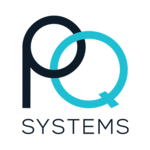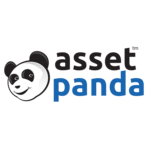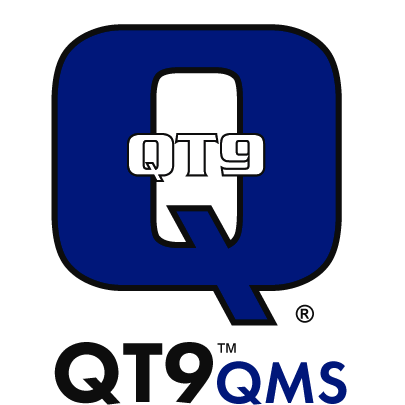Yes, most calibration software can be used on multiple devices and platforms. This means that you can access the software and perform calibrations from any device, including a desktop, laptop, tablet, and smartphone. Furthermore, these applications are designed to work with a variety of operating systems, including Windows, Mac, and Linux. This enables users on various devices and platforms to easily access and use the software without restrictions. It also supports collaboration and data sharing across multiple devices and platforms.
List of 20 Best Calibration Software
ProCalV5 is a calibration software that transforms and simplifies the device calibration procedure. With advanced capabilities like remote gauge monitoring and customizable access control, ProCalV5 enhances accuracy and productivity. Say goodbye to t...Read More ProCalV5
the Caliso Calibration Toolbox ADO - the top choice for reliable data and asset management used by industry experts worldwide. This cutting-edge calibration management solution is compliant with ISO 17025 and FDA regulations, empowering labs to effic...Read More Caliso Calibration Toolbox ADO
MicroNet is a network management software for businesses. With advanced monitoring, security features, and user-friendly interface, MicroNet empowers businesses to enhance performance, bolster security, and streamline operations effortlessly. Unleash...Read More MicroNet
EasyCal solution for managing all your calibration needs. Our software boasts preset calibration benches designed specifically for various industries, making the entire process automated and in compliance with industry standards. Bid farewell to manu...Read More EasyCal
CERDAAC is a cloud software by SIMCO, designed specifically for the life sciences, aerospace, and defense industries. With its extensive industry expertise, CERDAAC transforms quality management and production processes, ensuring efficiency and accur...Read More CERDAAC
IMDS - a leading software and hardware provider for the radiation sector. Our 20+ years of experience have earned us a global reputation for trusted solutions. We work with clients ranging from nuclear power plants to medical professionals and enviro...Read More IMDS
QMSys Calibration Management is a software designed to streamline and simplify the calibration process. By centralizing all calibration tasks, it ensures adherence to industry standards and improves equipment accuracy. Its user-friendly interface inc...Read More QMSys Calibration Management
Calibrate, software designed to enhance business productivity and efficiency. Its advanced process management and automation capabilities allow teams to streamline tasks, enabling them to focus on achieving strategic goals and driving overall perform...Read More Calibrate
TrackPro is a project management software designed to simplify tasks and enhance teamwork. By providing easy ways to assign tasks, track progress, and facilitate communication, TrackPro helps businesses improve productivity and ensure timely project...Read More TrackPro
Welcome to xTrak solution for all your calibration management requirements! Our cloud-based platform makes it easy to keep track of all your services and their current status. No more manual tracking and paperwork - xTrak streamlines your processes f...Read More xTrak
Calibration Control is a calibration management solution. Eliminate the hassle and confusion of manual calibration processes with automated tasks and detailed records of past gauge settings. With robust access controls, rest assured that your calibra...Read More Calibration Control
GageManager is a software solution for streamlining gage calibration management. Designed for manufacturers, this comprehensive tool simplifies the process, ensuring precision and compliance. With its advanced features, GageManager enables accurate m...Read More GageManager
QUINDOS - the leading metrology software specifically created for complex geometries and advanced measurement tasks. This reliable tool helps manufacturers meet high-quality standards and streamline inspection processes with its precision and flexibi...Read More QUINDOS
GAGEtrak is a calibration management software recognized for its outstanding performance. It simplifies processes by providing features like gage location monitoring and document attachment. Compliant with FDA 21 and CFR Part 11 regulations, it is th...Read More GAGEtrak
. GAGEpackis a gage management software tailor-made for manufacturers. This powerful tool streamlines the calibration process, tracks and monitors gages, and ensures compliance with standards. With precise measurement system control and thorough audi...Read More GAGEpack
Asset Panda is a versatile asset management software designed for various businesses. It provides instant and customizable updates on all platforms, catering to the specific needs of your organization. Its cost-effective pricing makes it suitable for...Read More Asset Panda
Beamex Calibration Software, an advanced and versatile solution for effectively managing calibration assets. This innovative software combines human expertise and cutting-edge AI technology, making calibration a seamless and hassle-free experience. I...Read More Beamex Calibration
CompliantPro is a compliance management software designed to streamline regulatory compliance. With its intuitive interface, automated workflows, and live tracking, CompliantPro delivers in-depth reporting and reduces compliance risks. This powerful...Read More CompliantPro
METBENCH is a metrology solution specifically designed to improve laboratory processes and promote precision in calibration and M&TE management. This innovative software offers advanced features to enhance accuracy and ensure compliance, making it id...Read More METBENCH
QT9 QMS is a quality management solution for businesses of any size. With our software, you can streamline and automate multiple business operations, all in one convenient suite. Our easy-to-use and scalable system allows for effortless centralizatio...Read More QT9 QMS
Learn More About Calibration Software
- What Is Calibration Software?
- What Are The Recent Trends In Calibration Software?
- Benefits Of Using Calibration Software
- Important Factors To Consider While Purchasing Calibration Software?
- What Are The Key Features To Look For In Calibration Software?
- Why Do Businesses Need Calibration Software?
- How Much Time Is Required To Implement Calibration Software?
- What Is The Level Of Customization Available In Calibration Software?
- Which Industries Can Benefit The Most From Calibration Software?
- Conclusion
What Is Calibration Software?
Calibration software is a specialized tool used by businesses and individuals to ensure the accuracy and precision of various measurement devices. It is commonly used in industries like manufacturing, aerospace, and healthcare, where precision and accuracy are critical to success. The software compares a measurement device's readings to a known standard and then makes adjustments to eliminate any discrepancies.
Calibration is an important process for keeping measurement instruments reliable and consistent. The software simplifies the calibration process while also providing advanced features like automated calibration, data storage, and analysis. It also supports a comprehensive calibration management system, allowing users to schedule, track, and document calibrations for multiple devices.
Investing in calibration software can provide numerous benefits to businesses, such as increased efficiency, fewer errors, and compliance with industry standards.It also allows for traceability and audit trails, which are critical for businesses operating in regulated industries. When selecting calibration software, consider the types of instruments supported, ease of use, and compatibility with existing systems.
Some software may include additional features like remote calibration and mobile compatibility, which can increase its usability and convenience. Overall, calibration software is critical to maintaining the quality and accuracy of measurement tools, making it an indispensable tool for businesses and organizations that rely on precise measurements. With the numerous benefits it provides, it is a wise investment that can result in significant improvements to a company's overall operations and success.
What Are The Recent Trends In Calibration Software?
The calibration software market has grown significantly in recent years as a result of rising demand for accuracy and efficiency across a wide range of industries. As technology advances, calibration software evolves to meet the changing needs of businesses and organizations. One of the most significant trends in calibration software is the shift to cloud-based solutions.
This facilitates access and collaboration among team members, as well as the ability to store and retrieve calibration data from any location. It also eliminates the need for physical servers, which reduces costs and maintenance requirements. Another trend is to incorporate Internet of Things (IoT) capabilities into calibration software. This enables real-time monitoring and automated calibration processes, resulting in higher accuracy and efficiency.
IoT also enables remote calibration, which reduces the need for technicians to be physically present, particularly in industries with critical or difficult-to-reach equipment. AI and ML have also found their way into calibration software. These technologies enable the software to learn from previous calibrations and make more accurate predictions for future ones.
This aids in identifying potential problems before they arise, reducing downtime and improving overall equipment performance. In addition to these technical trends, calibration software has been designed with user-friendly interfaces and customizable features. This enables easier and faster data entry, as well as the ability to customize the software to specific calibration processes and procedures.
Furthermore, the number of mobile calibration software applications has increased. This gives technicians the ability to perform calibrations on the go, increasing productivity and reducing paperwork. Finally, data security and compliance have become top priorities for calibration software. With sensitive data being stored and accessed, software providers are putting in place strict security measures to ensure compliance with industry standards and regulations.
Benefits Of Using Calibration Software
Calibration software is an effective tool for businesses that require accurate and precise measurements of various tools, instruments, and equipment. Calibration software is widely used in industries such as manufacturing, healthcare, and electronics. It provides numerous benefits that can improve a company's overall efficiency and performance.
we'll look at the key advantages of using calibration software, allowing you to make an informed decision about investing in this technology.
1. Improved Accuracy And Precision: The primary advantage of using calibration software is the increased accuracy and precision it offers. Automating the calibration process eliminates the possibility of human error, resulting in more accurate and reliable measurements. This, in turn, results in improved quality control, fewer product defects, and higher customer satisfaction.
2. Time-Saving And Cost-Effective: Manual calibration is a time-consuming and labor-intensive process that frequently necessitates the use of skilled personnel. However, calibration software makes the process more streamlined and efficient, reducing the time required for calibration. This also results in cost savings because it eliminates the need to hire additional employees or outsource the calibration process.
3. Regulatory Compliance: Businesses in highly regulated industries, such as healthcare and aerospace, must adhere to industry standards and regulations. Calibration software ensures that all equipment and instruments are calibrated in accordance with these standards, allowing businesses to better meet regulatory requirements and pass audits.
4. Improved Traceability And Documentation: Calibration software simplifies the tracking and management of calibration data, providing a complete history of all calibrations performed. This ensures traceability of measurements, which is critical for quality control and compliance with industry regulations. The software also generates detailed reports and certificates, which simplifies documentation and saves businesses time and effort.
5. Increased Equipment Lifespan: Regular calibration ensures that equipment and instruments are operating at peak efficiency, reducing wear and tear and extending their life. Calibration software allows businesses to set automated reminders to perform calibrations, preventing equipment from falling out of calibration and causing costly breakdowns.
6. Increased Efficiency And Productivity: Calibration software automates the calibration process, allowing businesses to calibrate multiple instruments at once, reducing downtime and increasing productivity. It also allows skilled technicians to focus on other important tasks, resulting in increased overall efficiency.
Important Factors To Consider While Purchasing Calibration Software?
Calibration software is a must-have tool for any organization that works with instruments, equipment, or systems that require regular calibration. This software automates the calibration process, increasing efficiency and accuracy. However, with so many options on the market, it can be difficult to choose the right one for your business.
To help you make an informed decision, here are the important factors to consider when purchasing calibration software.
1. Accuracy And Bependability: The primary goal of calibration software is to provide precise and dependable results. As a result, it is critical to select software with a strong track record of accuracy and dependability. Look for software that has been certified by the appropriate authorities and has received positive feedback from users in your industry.
2. Compatibility: Ensure that the calibration software is compatible with your current systems and equipment. It should be able to communicate and integrate seamlessly with your instruments in order to avoid discrepancies in the results. Compatibility also ensures that you can continue to use your existing equipment without making any additional investments.
3. User-Friendly Interface: Because calibration software will be used by technicians and operators, it must have an easy-to-use interface. The software should be simple to navigate, understand, and use. A complicated interface can cause errors and delays, reducing the accuracy of your calibration process.
4. Customization Options: Each business has unique calibration requirements, and the software should be able to meet those needs. Look for software that can be customized to meet your specific industry, equipment, and standards. This will make the calibration process more efficient and tailored to your specific business requirements.
5. Data Management And Reporting: Calibration software should be useful not only during the calibration process, but also for managing and analyzing data. Look for software that can store and organize calibration records, generate reports, and provide feedback to help you improve your calibration process.
6. Technical Support And Updates: A reputable calibration software provider should provide technical support and regular updates to ensure that your software is up to date. With technology constantly evolving, it is critical to have software that can adapt to changes and provide immediate assistance in the event of an issue.
7. Cost: As with any purchase, cost is an important factor to consider when purchasing calibration software. While it may be tempting to go for a cheaper option, keep in mind that the software's quality and features should not be sacrificed. Invest in software that is both cost-effective and has the features you require for calibration.
What Are The Key Features To Look For In Calibration Software?
Calibration software is an essential tool for businesses and organizations that require precise measurements and data. With so many options on the market, it can be difficult to decide which software is best for your needs.
To make an informed decision, here are the key features to look for in calibration software:
1. Calibration Management: Calibration software's primary function is to manage calibration processes efficiently. Look for software that lets you track and schedule calibrations, manage equipment and standard inventory, and save calibration certificates.
2. Compliance Management: Many industries rely heavily on regulatory standards like ISO, FDA, and GMP. Your calibration software should help with compliance management by providing audit trails, maintaining calibration records, and generating compliance reports.
3. Automation And Integration: Manual calibration processes are time consuming and error-prone. Look for software that automates calibration processes and integrates data with other systems, such as quality management or ERP software, to enable real-time monitoring and reporting.
4. Device Tracking And Calibration History: To ensure that your equipment is accurate and reliable, your calibration software should be able to track devices as well as their calibration history. This feature allows you to see the calibration status of your instruments and plan for future calibration needs.
5. Alert And Notification System: Timely notifications are critical for meeting calibration deadlines and avoiding nonconformance. Look for software that includes an alert and notification system to send reminders about upcoming calibrations, overdue calibrations, and non-compliant equipment.
6. Data Analysis And Reporting: A powerful data analysis and reporting feature provides valuable insights into your calibration processes. Look for software that allows you to customize your reporting, conduct statistical analysis, and analyze historical trends to help you make better decisions.
7. User-Friendly Interface: To ensure user adoption and effective software use, seek out a user-friendly interface with an intuitive design. This allows non-technical users to easily navigate the software and complete calibration tasks.
8. Customization And Scalability: Each industry and organization has distinct calibration needs. Choose software that is customizable to meet your specific requirements. Also, consider the software's scalability to accommodate your company's future growth and expansion.
Why Do Businesses Need Calibration Software?
Calibration software is an essential tool for businesses, particularly in the manufacturing, engineering, and testing industries. It is a technology for determining, comparing, and adjusting the accuracy of various instruments and equipment. This process ensures that the measurements and readings obtained by these tools are accurate and meet the necessary standards.
we'll go over the importance of calibration software for businesses and why investing in it is critical.
1. Ensures Accurate Measurements And Readings: The primary advantage of calibration software is that it ensures precise measurements and readings. Every instrument or piece of equipment has a certain level of accuracy; however, this accuracy can decrease over time due to wear and tear or environmental factors. Calibration software allows businesses to regularly check and adjust the accuracy of their tools, ensuring that the measurements they obtain are reliable.
2. Adherence To Industry Standards: In industries such as pharmaceuticals, food, and aerospace, strict quality standards are required. Calibration software assists businesses in complying with these standards by keeping a traceable record of calibration reports. This information is critical during audits and inspections to ensure that the business meets the required standards.
3. Saves Time And Resources: Previously, calibration was done manually, which was time-consuming and labor-intensive. Calibration software allows businesses to complete this task quickly and efficiently, saving valuable time and resources. Automated calibration also reduces the possibility of human error, yielding more accurate and consistent results.
4. Cost-Effective: While investing in calibration software may appear to be an unnecessary expense, it can actually save businesses money over time. Regular calibration ensures that equipment functions properly, lowering the likelihood of costly repairs or replacements. It also reduces downtime and increases productivity, resulting in cost savings for the business.
5. Assists In Identifying Equipment Issues: Calibration software not only checks the accuracy of equipment but also detects any potential problems or malfunctions. With this information, businesses can take proactive steps to address the issue before it worsens, avoiding costly disruptions to their operations.
6. Improves Overall Quality And Efficiency: By ensuring accurate measurements and equipment, calibration software helps to improve the overall quality and efficiency of a company's operations. This results in a more dependable and consistent finished product, which increases customer satisfaction and loyalty.
How Much Time Is Required To Implement Calibration Software?
When it comes to implementing calibration software, the time required varies depending on a number of factors, including the software's complexity, the size of the organization, and the degree of customization required. Fully integrating and deploying calibration software within an organization can typically take a few weeks to a few months.
The first step in implementing calibration software is to configure the software. This includes installing the software on the appropriate devices and configuring it to meet the organization's specific requirements. This step can take anywhere from a few days to a few weeks, depending on how many devices are involved and how complex the software is.
The next step is to transfer data from existing systems to the calibration software. This may include information such as previous calibration results, equipment specifications, and maintenance schedules. The time required for this step varies greatly depending on the amount of data and the software's compatibility with current systems.
Training follows the installation of the software and the transfer of data. It is critical to train employees who will use the software to ensure they are familiar with its features and functionalities. Training time can range from a few days to a few weeks, depending on the software's complexity and the number of users. After the software is completely implemented, there is a period of adjustment and testing.
This is required to ensure that the software is properly functioning and meeting the organization's requirements. This phase can last anywhere between a few weeks and a month. Overall, implementing calibration software can take between four and six months on average. However, this timeline may vary depending on the organization's specific needs and the level of customization required. To ensure a smooth and successful software implementation, additional training and testing time must be factored in.
What Is The Level Of Customization Available In Calibration Software?
Calibration software is an indispensable tool for businesses and industries that require precise measurements. It contributes to the accurate calibration of equipment and devices, resulting in more consistent results and increased efficiency. One important factor to consider when purchasing calibration software is the level of customization available.
Customization in calibration software refers to the ability to tailor the software to your specific business or industry requirements. It allows you to customize the software to meet your specific calibration processes, procedures, and standards. This feature is especially important because calibration requirements vary across industries and businesses. The level of customization available in calibration software varies according to the provider and software.
Some software may provide limited customization options, whereas others may allow for more extensive customization. It is critical to consider the level of customization available before making a purchase to ensure that it meets your specific requirements. Some common customization options in calibration software include the ability to create and store custom calibration procedures, add custom fields or parameters, generate custom reports, and set user access levels.
These features allow you to tailor the software to your specific calibration requirements, improving accuracy. Furthermore, advanced calibration software may allow for more complex customization options, such as integration with existing databases, systems, or data management tools. This allows for more seamless data exchange and increases the efficiency of the calibration process.
Investing in calibration software with a high level of customization can eventually save your company time and money. You can streamline your calibration processes while improving accuracy and efficiency by customizing the software to your specific requirements. As a result, when deciding on the best calibration software for your business, you must consider the available customization options.
Which Industries Can Benefit The Most From Calibration Software?
Calibration software is a useful tool for a variety of industries, assisting businesses in maintaining accuracy and compliance in their measurement and testing procedures. While calibration software can benefit most industries, certain industries stand to benefit the most from its implementation.
we'll look at which industries can benefit the most from calibration software and what features to look for when making a purchase decision.
1. Manufacturing: In the manufacturing industry, precise measurements and tests are critical to ensuring product quality. Calibration software can assist manufacturers in taking accurate and reliable measurements by providing advanced tools and features like statistical process control, tolerance analysis, and traceability. This reduces the likelihood of errors and ensures that products meet quality standards, resulting in higher product quality and customer satisfaction.
2. Healthcare: In the healthcare industry, calibration software is critical for ensuring the accuracy of medical equipment and devices. Every piece of medical equipment, from blood pressure monitors to X-ray machines, requires regular calibration to ensure accurate readings and diagnoses. Calibration software can help healthcare facilities manage their calibration schedules, track equipment status, and generate calibration certificates, ensuring regulatory compliance and patient safety.
3. Aerospace And Defense: Industries dealing with highly complex and sensitive equipment, such as aerospace and defense, require precise measurements to ensure safety and performance. Calibration software is especially useful in this industry because it allows organizations to monitor the calibration status of each instrument, manage calibration costs, and ensure compliance with stringent industry regulations. This, in turn, ensures the dependability and precision of the equipment used in these industries.
4. Energy And utilities: Maintaining accurate measurements is critical in the energy and utilities sectors, where even minor errors can have serious consequences for operations and safety. Calibration software can assist companies in this industry in tracking critical assets, managing calibration schedules, and performing equipment testing and maintenance, resulting in uninterrupted operations and avoiding downtime.
5. Food And beverages: In the food and beverage industry, measurements and tests are critical to ensuring product quality and safety. Calibration software can help manage the calibration of food production equipment such as temperature gauges, scales, and pH meters. This ensures that the products meet regulatory standards and prevents any potential health risks from inaccurate measurements.
Conclusion
To summarize, selecting the appropriate calibration software for your business is critical for accurate measurements and maintaining quality standards. It is critical to carefully consider factors such as compatibility with your equipment, usability, and advanced features. Furthermore, conducting extensive research and contacting vendors for demos and trials can greatly assist in determining the best fit for your specific requirements.
Remember to factor in long-term costs, such as maintenance fees and updates, to ensure that the software is cost-effective in the long run. Keep in mind that a reputable software provider with excellent customer service can significantly improve your overall experience. Finally, investing in dependable and efficient calibration software can save time and resources while also increasing productivity and accuracy.
With this buyer's guide, we hope to have given you enough information to make an informed decision and find the best calibration software for your business.
Calibration Software FAQ's
Can Calibration Software Be Accessed Across Multiple Devices And Platforms?
Is Calibration Software Future-Proof And Adaptable To Emerging Technologies Like Ai, Blockchain or Iot?
Calibration software is constantly evolving and adapting to emerging technologies such as artificial intelligence, blockchain, and the Internet of Things. With the ever-changing landscape of the technology industry, calibration software is designed to be current and future-proof. It can integrate with these emerging technologies, offering advanced features and functionality to ensure precise and efficient calibrations. This adaptability makes calibration software an excellent investment for businesses looking to stay competitive in an ever-changing technological landscape.
Is There A Free Trial Offered to Assess Calibration Software Before Committing?
Yes, many calibration software companies provide free trial periods for potential customers to evaluate their software before making a commitment. This allows users to test the software's features and functionality to see if it meets their requirements. Some companies may require users to provide personal information or sign up for a trial account, whereas others provide a completely free trial with no restrictions. It is recommended that you take advantage of these free trials to ensure that the chosen software is the best fit for your calibration requirements.
Does Calibration Software Offer Data Security Features And Meet Regulatory Compliance Standards?
Calibration software typically includes data security features like user authentication, encryption, and multi-level access controls to safeguard sensitive information. Furthermore, it is intended to meet regulatory compliance standards such as ISO 9001, ISO 17025, and FDA requirements. This ensures that the software is dependable, accurate, and traceable, making it an excellent choice for businesses in manufacturing, healthcare, and biotechnology.
Can Calibration Software Integrate Seamlessly With Existing Tools And Platforms?
Yes, most modern calibration software is intended to work seamlessly with existing tools and platforms. This eliminates the need for duplicate data entry and speeds up the calibration process. Calibration software can provide real-time information and streamline data management by connecting to existing systems like asset management tools or maintenance software. This saves time, increases accuracy, and boosts overall efficiency. Calibration software provides a comprehensive solution to all of your calibration needs by integrating with existing tools and platforms.


